Design Guide for Immersive Audio Systems
General Guidelines
Rendering of both object-based mixing "sources" and active acoustic reflections in Fulcrum's immersive systems is based on a joint time/level algorithm related to wave field synthesis. In most cases, relatively "sparse", low-density loudspeaker layouts are used in practice causing the primary localization mechanism to be centered around the binaural precedence effect. The following guidelines act as a starting point for implementing new immersive system designs:
- Speaker system geometry: Fulcrum's immersive audio platform can render spatialized audio into any loudspeaker system geometry regardless of loudspeaker type, position, or orientation in 2D or 3D arrangements. Depending on the application, certain arrangements may work better than others based on your design goals.
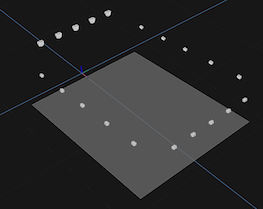
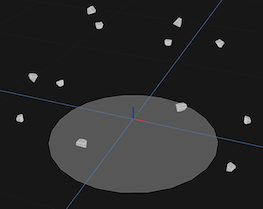
- Speaker coverage relative to each listener: Ensure that every listener can "hear" at least two (better if three) loudspeakers from their location within 3 dB of each other using A-weighted pink noise. When overlapping adjacent channels, we recommend that the centerline of one speaker align with at most the -3 dB coverage contour of the adjacent loudspeaker(s).

- Speaker coverage along its axis: Coverage along the front-to-back axis of each immersive channel should be within +/- 2 dB across the listening zone using A-weighted pink noise.
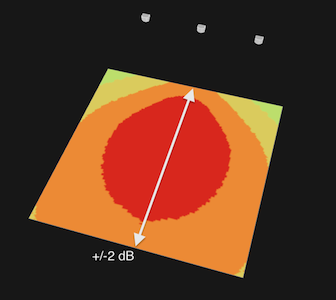
- No miracle cures: While immersive systems may allow you to obtain drastic improvements in sound quality and spatial rendering, immersive designs will not artificially improve coverage, intelligibility, or the maximum output of a poorly-conceived loudspeaker system. Put simply, if a loudspeaker topology would not be suitable for conventional coverage without the application of immersive processing, it also will not be suitable for immersive audio duties.
Live Performance Systems
While Fulcrum's object-based mixing and active acoustics technologies are valid for many audio applications in themed entertainment, virtual reality, acoustic enhancement, and sports venue design, we will first consider the case of a live performance system when introducing design techniques. This is directly applicable to music performance spaces, theater, and other stage-centric performance venues. These design philosophies may then be extended to other, more specialized applications.
Front loudspeaker systems
Immersive audio designs are highly effective at improving the spatial rendering and mix experience in live performance mixing environments. In the majority of cases, these applications utilize a defined "stage" at the front of a venue and an audience chamber facing the stage. These systems are representative of live music mixing stages, theatrical sound design, and touring applications, most of which are separated by audience size and sound level requirements. Some guidelines for implementing these systems are as follows:
- Lateral coverage criterion: Ensure that every listener can "hear" at least two (better if three) loudspeakers from their location within 3 dB of each other, using A-weighted pink noise. When overlapping adjacent channels, we recommend that the centerline of one speaker overlap with the -3 dB coverage contour of the adjacent loudspeaker(s).

- Front-to-back coverage: Each channel in the front loudspeaker system must cover the intended audience area front-to-back. We recommend no more than a +/-2 dB coverage variation using A-weighted pink noise. This can be easily simulated and verified in Fulcrum One.

- Front channel count and density: The front loudspeaker system reinforcing the stage should typically contain at least 2 loudspeaker channels, and may ideally contain many more channels (4, 5, 7, etc.) as desired to improve coverage and imaging between sources. If possible, space these channels evenly across the full width of the performance area such that panning across the stage is consistent. Use the same loudspeaker model(s) and topology across the width of the stage to maintain consistent performance as sound objects are moved around the stage. In cases where only a stereo (2 channel) front system is available for a performance, most OBM mixes will still correctly function, just with limited spatial resolution.
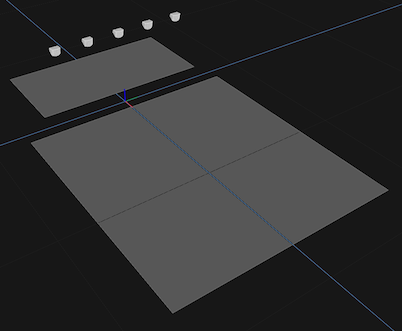
- Shape of the front channels: If the stage front and audience are not curved, place the front loudspeakers along the edge of the stage in a straight line at an appropriate height. If the stage is curved, or, if side areas are to be covered, the loudspeaker arrangement can be formed into a slight convex arc to fit the stage and audience splay as long as coverage criteria is maintained.

- Arrays as front channels: Line arrays or other multi-loudspeaker arrangements can be used as a front channel, which can be useful for obtaining good front-to-back coverage or achieving high maximum output levels. When an array is utilized, One will treat the array as a single rendering target for immersive rendering and coherent audio will be produced across all array elements.
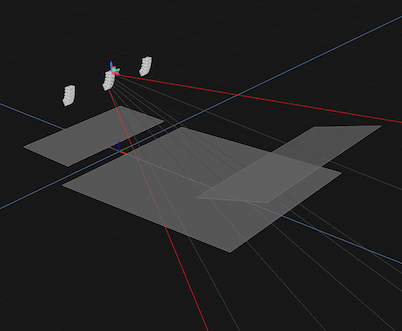
- Delay systems: Delay loudspeakers can be used to extend the coverage of the front loudspeaker system to the furthest seats, which is especially useful in low-ceiling or low-profile applications where large front loudspeaker arrays are inappropriate. In addition, delay speakers can be used to cover over- and under-balcony seating in auditoria. In these cases, still seek to maintain a +/-2 dB coverage variation using A-weighted pink noise. In most cases, the front system should cover at least up to the -3 dB contour of the delay element such that the transition can be as smooth as possible. In many cases, a lower quantity of loudspeakers may be used in delay arrangements relative to the front system as long as lateral coverage requirements are maintained.
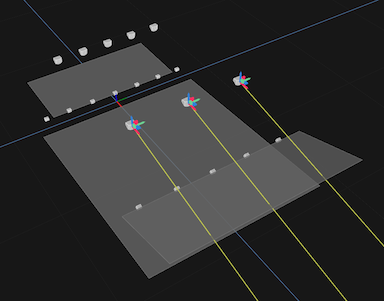
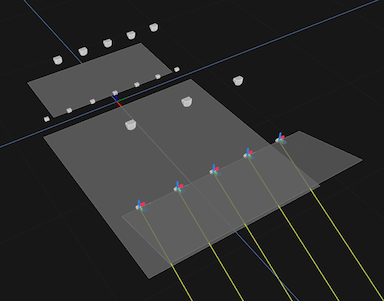
- Front fills: In many live performance environments, front channel loudspeakers must be positioned at a significant height to maintain good front-to-back coverage. In these cases, coverage for seating areas nearest the stage can be enhanced using smaller loudspeakers distributed across the front of the stage lip. In immersive system design, it is ideal to separately power and process each front fill loudspeaker and treat it as a separate OBM speaker, which allows these seats to experience a spatial impression equivalent to the main seating areas. We recommend choosing a side-to-side spacing interval that matches the lateral coverage criterion between each front fill channel at the frontmost seating row.
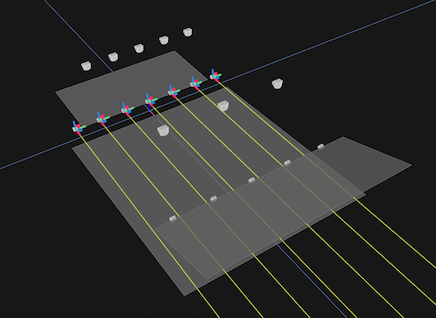
- Subwoofers: Subwoofers can be deployed using any preferred technique, either flown above the stage with the main front loudspeakers or placed along the front edge of the stage. Subwoofers can be processed in one of two ways:
- Each subwoofer can be separately added as an OBM loudspeaker, allowing the source position to affect the shape of the wavefront produced by multiple subwoofers.
- Subwoofers may be "processed" as a group, similar to typical sound reinforcement designs, and then fed using separate signals or mixes (like an "aux" bus mix) from a mixing console.

- Mixing parameters: Fulcrum One defaults its object-based mixing settings to be appropriate for most music mixing applications. The zoom control is most important: zoom values above 50% help each seat to receive a similar mix "level" for each source, which helps mixes to translate well across a large venue. Low zoom values can be useful for virtual-reality-style rendering environments, or theatrical applications where sources need to "disappear" based on their object distance from the listener. In addition, the speaker image width control allows the system to soften the transitions between loudspeakers; higher values are appropriate for convex speaker arrangements or when covering zones with fill speakers. In addition, delay parameters are available to configure the precedence effect when using delay loudspeakers. See "Object-Based Mixing Settings" for more information.
Perimeter loudspeaker systems
While some immersive performance systems will contain only stage-front loudspeakers, larger immersive designs may utilize perimeter loudspeakers to move sound objects around the audience or to generate simulated acoustic reflections using active acoustics. In either case, the following recommendations are useful for system design:
- Lateral loudspeakers: After the front loudspeaker design, "lateral" loudspeakers along the side of the performance area are the next most critical component in immersive system designs. Due to its reliance on inter-aural time delays, the human hearing system is very sensitive to localizing sounds and reflections from the sides, which can be useful for effects or to "support" the direct sound with simulated reflections. When designing lateral systems, use the established guidelines for lateral coverage overlap and front-to-back coverage to ensure these channels cover the intended audience areas. For some active acoustics applications, column loudspeakers or "delay" lateral systems can help to extend coverage across a large audience area.
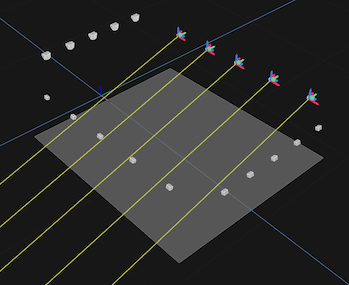
- Rear loudspeakers: Loudspeakers positioned to the rear of the audience chamber can help to create rearward-origin reflections, enveloping reverberation, or sound objects intentionally placed behind the audience. In rooms with balconies, it can be prudent to add separate "rear" channels covering the main audience chamber, the balcony, and the under-balcony areas. Time delays are automatically calculated for acoustic reflections and sound objects into these loudspeakers based on their position and orientation.
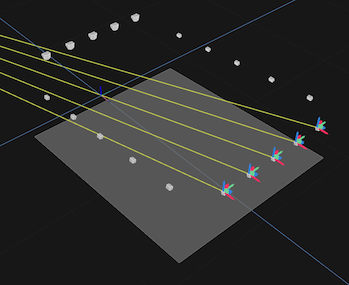
- Overhead loudspeakers: Overhead loudspeakers can be useful for adding a vertical (height) dimension to sound positioning, as well as creating a natural sense of overhead reflections. When adding overhead loudspeakers, we recommend a minimum coverage layout overlapping the -3 dB coverage contour of the adjacent loudspeaker(s) using A-weighted pink noise. Even though vertical "median-plane" localization is more difficult for the human auditory system, overhead reflections and reverberation are highly coveted in concert hall designs, and the introduction of vertical energy can greatly enhance active acoustics installations for traditional music. These channels are also useful for rendering certain cinematic surround formats or sound effects with overhead components.
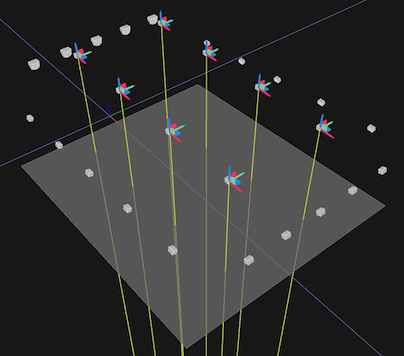
- Perimeter subwoofers: The bandwidth of the perimeter systems can be optionally extended by including subwoofers throughout the perimeter system. Subwoofers may be "spaced" along walls or ceilings to provide energy to sound sources emanating from those directions. We recommend a minimum +/-3 dB coverage criterion over the intended bandpass for subwoofer direct sound through the audience chamber for each "dimension".
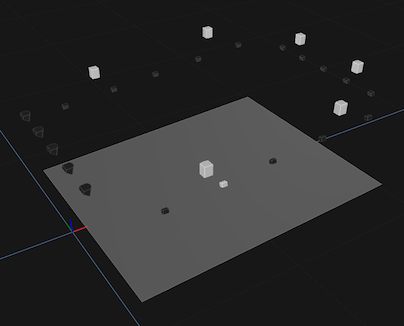
SPL Requirements
Immersive loudspeaker systems should be "sized" similarly to that of a typical reinforcement or playback system. When dealing with a "stage-centric" design, each stage-front loudspeaker channel should be capable of the maximum SPL required in the audience chamber at high frequencies. Use the appropriately weighted pink noise or EIA-426B (music spectrum) in Fulcrum One to determine the maximum system output using the front channels.
In most live performance and cinematic systems, the perimeter channels are not required to support the same maximum output capability of the front system. These channels typically support limited sound energy for effects and reflections using active acoustics for specific sources (vocals, guitars, etc.) but not a full-bandwidth mix. In these cases, analyze the maximum output of the side channels relative to the content requirements and adjust accordingly. One strategy may be to match the maximum output capability of a single front channel to "all" side channels coming from a single direction (e.g. a simulated "plane" wave) using A-weighted pink noise. See below for an example:

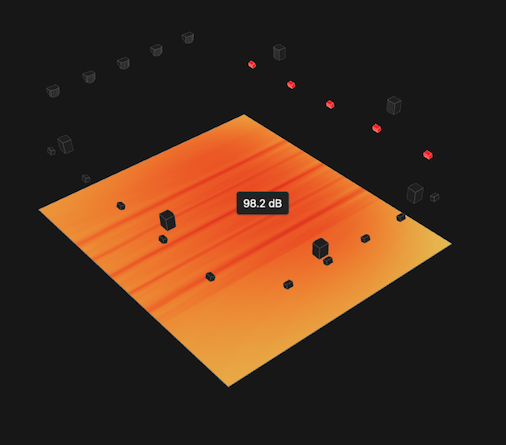
Exceptions to this rule might include requirements for specialized systems (domes, virtual reality, etc.) or when designing specifically for active acoustics to support large instruments like a pipe organ, where the low-frequency capability of the perimeter system is called upon to support a high "bass ratio" of reflective energy. Contact Fulcrum Acoustic for assistance with special conditions.
Active Bass Control
Active bass control is useful for minimizing low-frequency "build-up" or variations throughout a room due to room boundary effects and varying subwoofer arrangements. Active bass control in Venueflex processors operates below 120 Hz and requires subwoofers to be placed at the offending boundary locations. In many cases, an improvement in coverage and a reduction in specific subwoofer room effects can be obtained while also using these same subwoofers to support object-based mixing or active acoustics.
Principle of Operation
Active bass control operates by driving a network of subwoofers throughout a space with a custom-calibrated signal derived from the "subwoofer" or full-range mix signals being sent to the primary reinforcement or playback system. After the calibration process, the system uses FIR filters to create a custom signal for each subwoofer in the network. The objective is to control the sound pressure at the room boundary, minimizing the influence of reflective low-frequency energy on the audience area. Fulcrum One is used to configure and calibrate the active bass control system in a Venueflex processor. Active bass control consumes convolution channels in the processor and can operate in parallel with an active acoustics system as long as sufficient convolution channels are available to meet all project requirements.
Limitations
Active bass control requires that a number of additional low-frequency sources (subwoofers) be added into a space. These subwoofers manipulate the low-frequency uniformity by “adjusting” the LF pressure along the walls and other room boundaries. Since we cannot add an infinite number of subwoofers fully covering the walls and ceiling, we cannot fully control the pressure at the boundaries at all frequencies and positions. This may lead to imperfections in the behavior at some seats, potentially introducing temporal artifacts or "time smear" at low frequencies. This can be more audible with fewer control subwoofers spaced over longer distances, as the wavefront cannot be fully "sampled" across the room boundary.
To minimize artifacts, the high-frequency limit can be set during calibration between 60 Hz and 120 Hz, with lower numbers more appropriate for sparse subwoofer arrangements. In most cases, these trade-offs can be made to be inaudible or minimized by careful system design and calibration. The improvements in overall uniformity tend to outweigh any localized artifacts.
Active bass control can be very effective at improving the overall performance of the system, but is not a "cure-all" for acoustical defects and poor subwoofer deployment.
Design Considerations
When designing an active bass control system, consider the following guidelines:
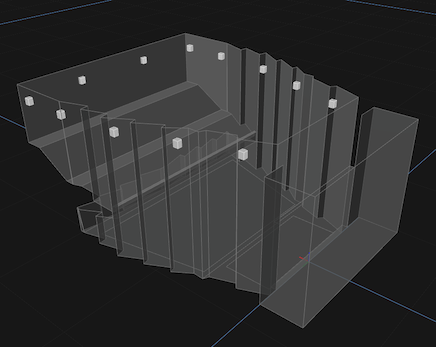
-
Subwoofer arrangements: To fully control the sound pressure, subwoofers would theoretically "wrap" the entire venue. However, this is impractical and often excessive given the effects we are actually trying to correct. In most cases, placing subwoofers along high-pressure zones can help shift room behavior sufficiently to improve coverage and linearity. This might include locating subs in corners, along wall-to-ceiling joints or near balcony or raised seating areas.
-
Subwoofer spacing: Ideally, subwoofers should be spaced at an average of 1/2-wavelength at the highest frequency that is being addressed, and no more than 1 wavelength apart. For example, if treating 50 Hz, space subs at an interval of approximately 11 ft and no more than 22 ft apart in order to accommodate end-to-end wavefronts travelling parallel to the wall surface (equal pressure being perpendicular). Note, this criterion relaxes if the wavefront is traveling perpendicular to the wall (equal pressure being parallel to the wall) so this guideline helps to form a worst-case design recommendation.
-
Balconies and raised seating: Areas of raised seating or balcony regions inherently cause a change in acoustical impedance for large wavefronts traveling in a venue, which can affect low-frequency performance in these areas. It is often helpful to add active bass zones in these areas to minimize this effect for listeners seated in these regions.
Choosing a Processor
Once a loudspeaker layout is completed, choose the Venueflex processor(s) required to complete the design based on the input and output requirements. The available processors are shown below:
| Model | Inputs / Objects | Outputs / Speakers | Convolutions | Upgradable |
|---|---|---|---|---|
| Venueflex-8 | 48 | 32 | 8 | ✗ |
| Venueflex-16 | 128 | 64 | 16 | ✓ |
| Venueflex-32 | 128 | 64 | 32 | ✓ |
| Venueflex-64 | 128 | 64 | 64 | ✓ |
| Venueflex-96 | 128 | 64 | 96 | ✓ |
| Venueflex-128 | 64 | 64 | 128 | ✓ |
To choose a processor, consider the following, referencing the table above:
- Consider the number of audio inputs, and/or object-based mixing sources required. Every input on a Venueflex processor can be used to feed a sound object, or can be independently routed to any output through a level/delay matrix.
- Consider the number of outputs required. An output is required for every loudspeaker and/or array in the design. When processing multi-way loudspeakers or array elements individually inside the Venueflex DSP, separate outputs will be used for each element. When processing these items externally (such as through an external DSP amplifier), only one output is required per multi-way speaker, and only one output is required per array. Multiple processors may be used to increase the output channel capacity of the system if more than 64 outputs are required.
- If active acoustics or active bass control is to be used, calculate the number of convolution channels needed for your design. This is given with the following relation:
Nconvolutions = (Nabi * Nabs) + ( Naas * Nips * Nspaces )
where...
| Nconvolutions | Number of convolutions required. |
| Nabi | Number of active bass inputs. |
| Nabs | Number of active bass subwoofers in your design. |
| Naas | Number of active acoustics speakers in your design. Arrays can be counted as one speaker. |
| Nips | Number of inputs per active acoustics space. Default is 2 (stereo). |
| Nspaces | Number of active acoustics spaces you wish to simulate simultaneously. |
If you prefer, this calculation and the equivalent selection criteria can be automatically handled by adding a Venueflex Processor to your One project using the New Engine dialog.
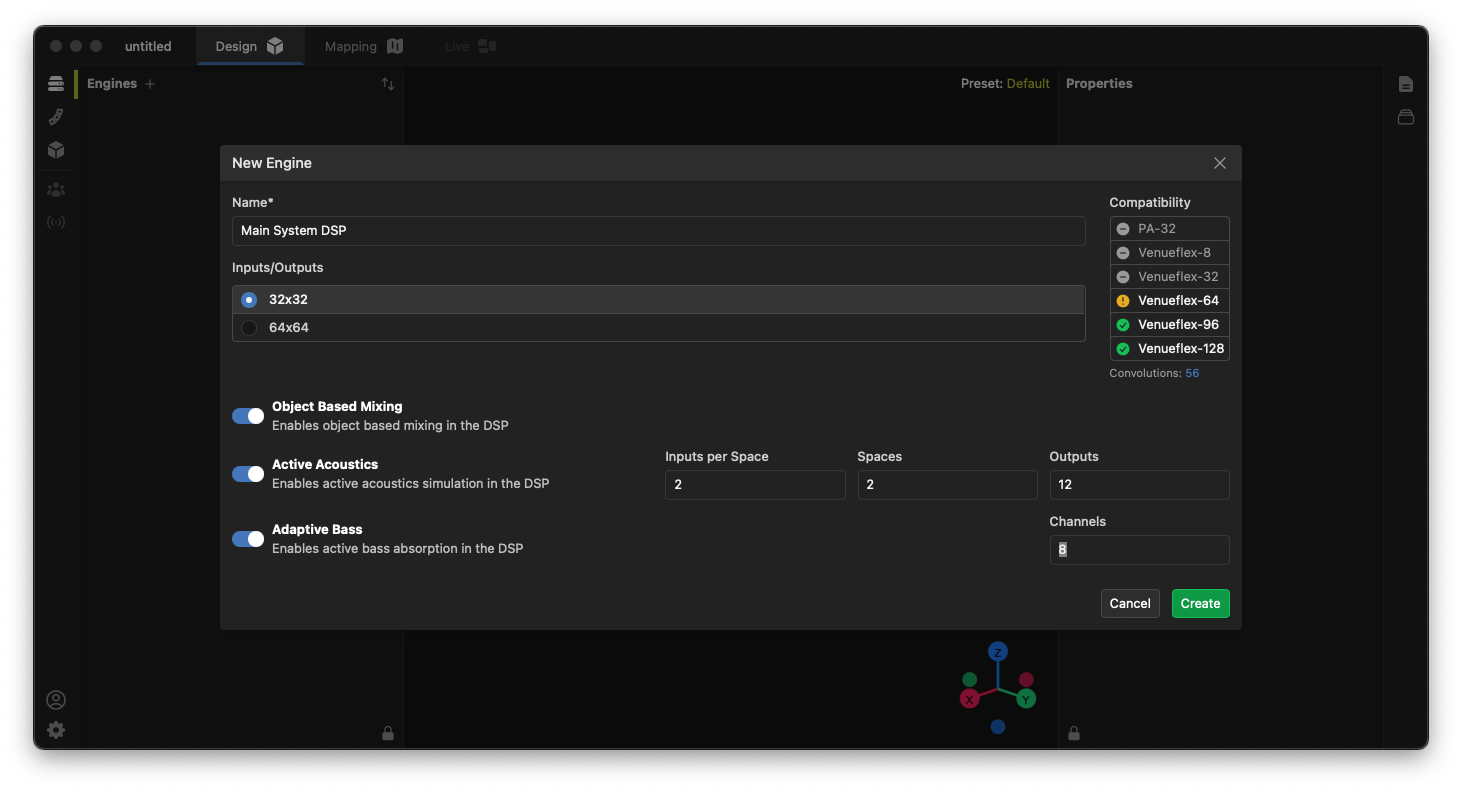
Acoustical Considerations
While the full design of a room acoustics environment is beyond the scope of this document, some guidelines are appropriate for designing immersive audio systems. Note that when an immersive system shares a venue with a cinema format such as Dolby Atmos or THX, these systems may have specific requirements not discussed here. For complex situations, always obtain the services of a professional acoustical consultant.
-
Acoustical defects: Ensure that the room is sufficiently free from acoustic "defects" such as flutter echo or focusing effects. Verify that no loudspeaker in the immersive system is casting excessive energy on focusing or reflecting surfaces that might create echoes or sound-image shifts in the audience area. Fulcrum One can be used to visualize loudspeaker coverage on room boundaries.
-
Reverberation times: Natural reverberation times in the room should be appropriate for the performance content used in the space. If active acoustics are used, design the room's natural acoustics to suit the least-reflective signature for content used in the space, and then employ the active acoustics system to create more reflective variations of the room for other uses. In most cases, this suggests optimizing the room's natural reverberation time to be appropriate for speech or amplified music. We recommend a "flat" reverberation time response versus frequency, except in certain cases where a positive bass ratio is desired (such as orchestral or organ performance). Note that rooms can be made "too dead," which can exacerbate acoustical defects due to a lack of masking; ensure that the natural acoustics are appropriately optimized and not overly absorptive, even with an audience present. Fulcrum One can assist in simulating reverberation time behavior for room design purposes.
-
Ambient noise levels: Ambient noise levels must be low enough to fully hear the mix and all desired active acoustics reflections, no different than design for traditional environments. Note that high ambient sound levels may mask reflections and reverberation, so the use of active acoustics systems may increase the importance of low-noise design in spaces where this requirement was previously relaxed.
Special-Purpose Systems
-
Active acoustics for traditional music: When designing active acoustics system for traditional instruments, keep in mind that reverberation levels for traditional instruments like a pipe organ may equal or exceed the direct sound level from the instrument itself. This can inform the sizing of loudspeakers used to create the reflective sound field. In addition, if a "closed-loop" system is desired with active microphones in the space far from the sound source, we recommend the use of our MicFlex adaptive signal processor to minimize the presence of feedback.
-
Hemispherical systems: Hemispherical or semi-spherical systems are popular for virtual reality and entertainment applications. In most cases, the loudspeaker system should be evenly deployed around the audience to minimize transitions as sources move around the listener. Symmetry and consistency in loudspeaker system design is encouraged, both for broadband loudspeakers and accompanying subwoofers.
-
Cinema and surround formats: Venueflex processors can simultaneously perform object-based mixing, active acoustics, and route individual inputs to specific loudspeakers with adjustable level and delay. This can be used to build inherent compatibility with cinema sound formats. In addition, an alternate method can be used where virtual channel "objects" are positioned and fed with decoded surround channel content. This can automate the process of routing different formats to the speaker system.
-
Very large-scale systems: Arenas, stadiums, and theme parks can use Venueflex processors and object-based mixing for many applications, as the maximum available matrix delay exceeds the physical size of most of these venues by many times. Using OBM virtual sources in these environments greatly simplifies the setup and tuning of these systems, as time delays are constantly recalculated as objects are placed, even over great distances. Always note, however, that sound objects placed physically far away from each other will encounter an effective time delay equal to natural propagation at each listener. Therefore, tightly-timed musical events should be originated from objects placed near one another, as musical timing can be affected over large distances for different listening locations.
Example Systems
Small Object-Based Mixing System
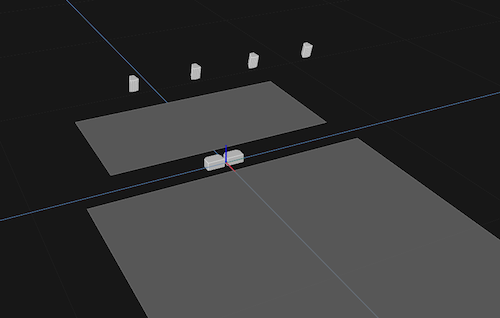
This immersive system represents an entry-level design that is relevant to small theaters, school auditoriums, and portable music systems. The design requires a Dante-based mixing console or other Dante audio source. It offers the following features:
- Object-based mixing across the width of the stage using up to 48 sound objects.
- Active acoustics processing for simulated frontal reflections (greater spatial realism and sonic quality than simple reverbs).
- Low-frequency subwoofer support.
Products used:
| Quantity | Product | Description | |
|---|---|---|---|
 | 1 | Venueflex-8 | Immersive audio processor, 48x32 with 8 convolutions |
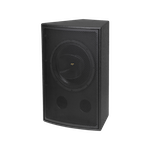 | 4 | GX1295 | Front loudspeakers |
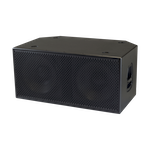 | 2 | Sub215L | Subwoofers |
High-End Auditorium with Active Acoustics and Active Bass Control
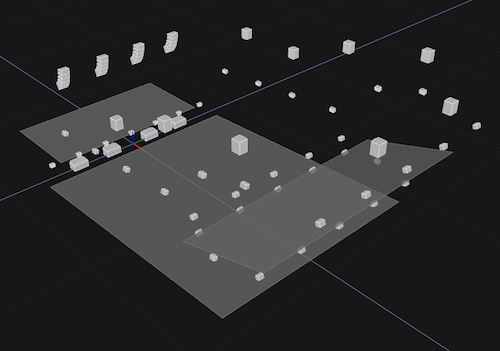
This design represents a larger auditorium system with full lateral active acoustics and active bass control technologies. The design requires a Dante-based mixing console or other Dante audio source. It offers the following features:
- Object-based mixing across the width of the stage and around the auditorium laterally using up to 128 sound objects.
- Subcardioid front line array systems for high output mixing.
- Immersive front fill and under-balcony support systems.
- Active acoustics processing including frontal, lateral and rearward reflections and reverberation.
- Subcardioid low-frequency subwoofer support.
- Active bass control in main audience chamber and balcony.
Products used:
| Quantity | Product | Description | |
|---|---|---|---|
 | 1 | Venueflex-96 | Immersive audio processor, 128x64 with 96 convolutions |
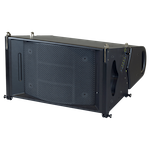 | 24 | FL283T | Front subcardioid line array loudspeakers |
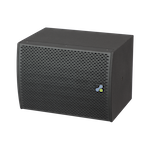 | 12 | RX8 | Front fill and under-balcony loudspeakers |
 | 4 | CS218L | Subcardioid subwoofers |
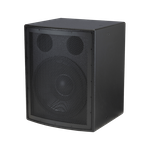 | 10 | Sub115 | Active bass control subwoofers |
 | 29 | RX8 | Active acoustics loudspeakers |